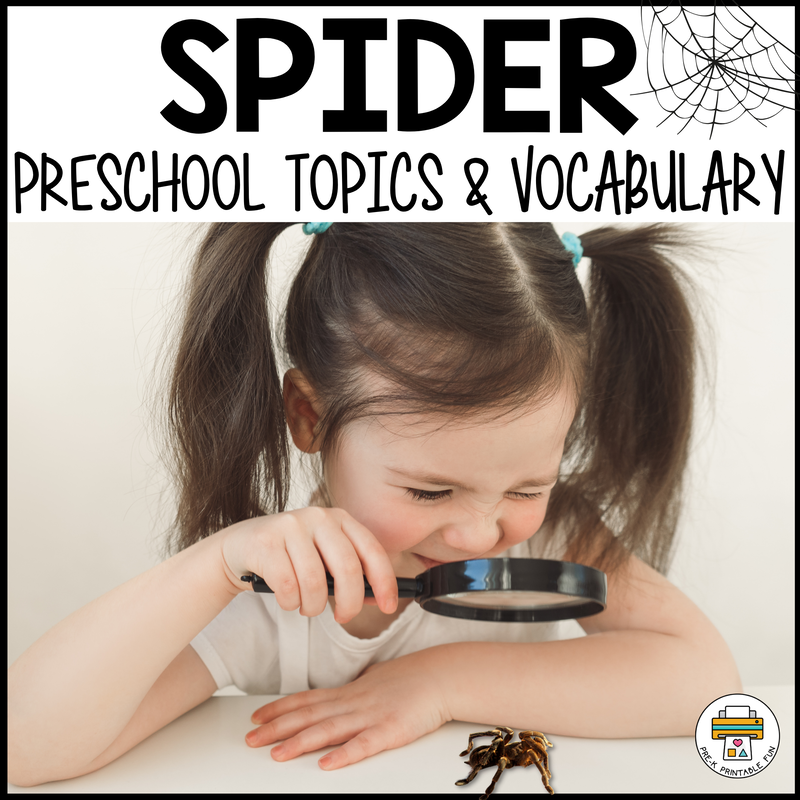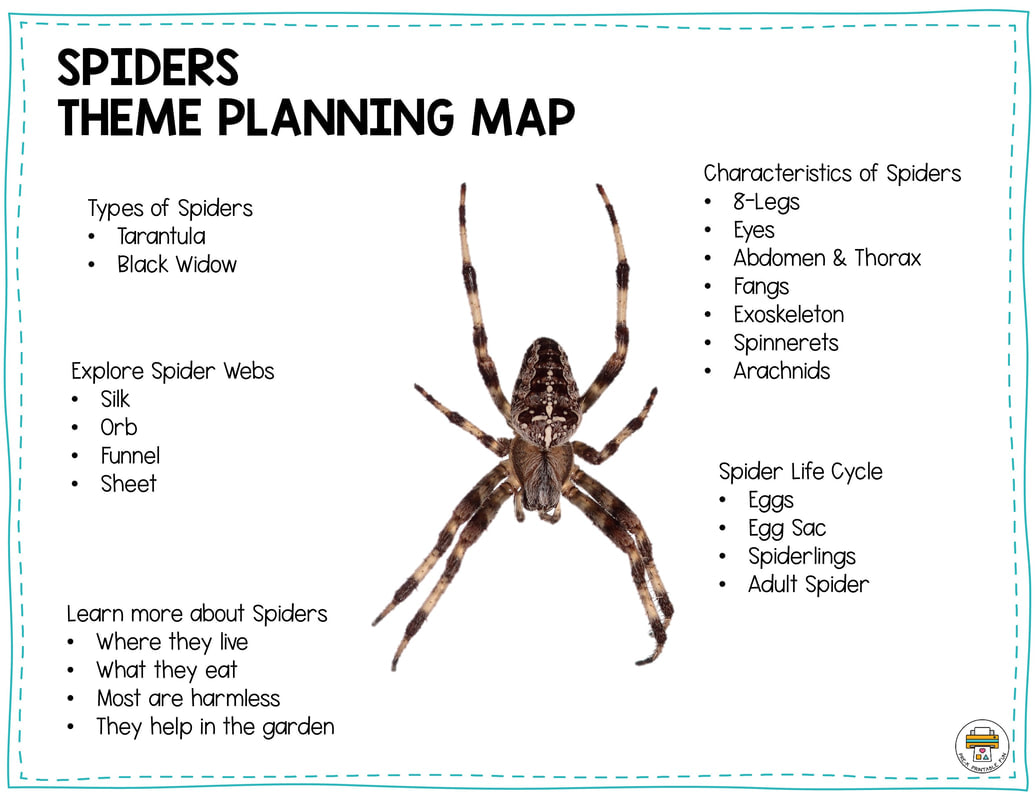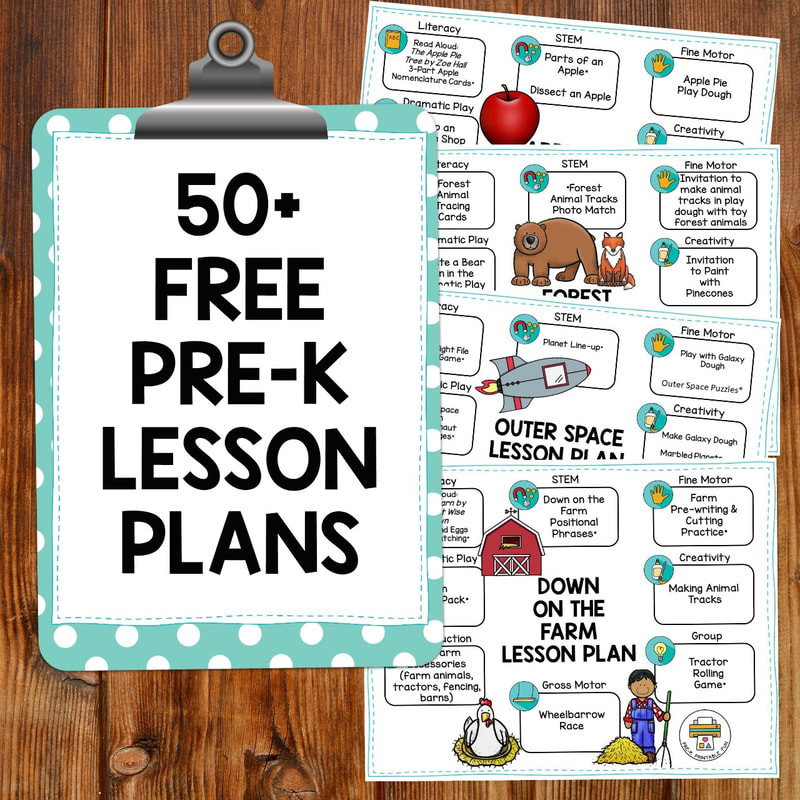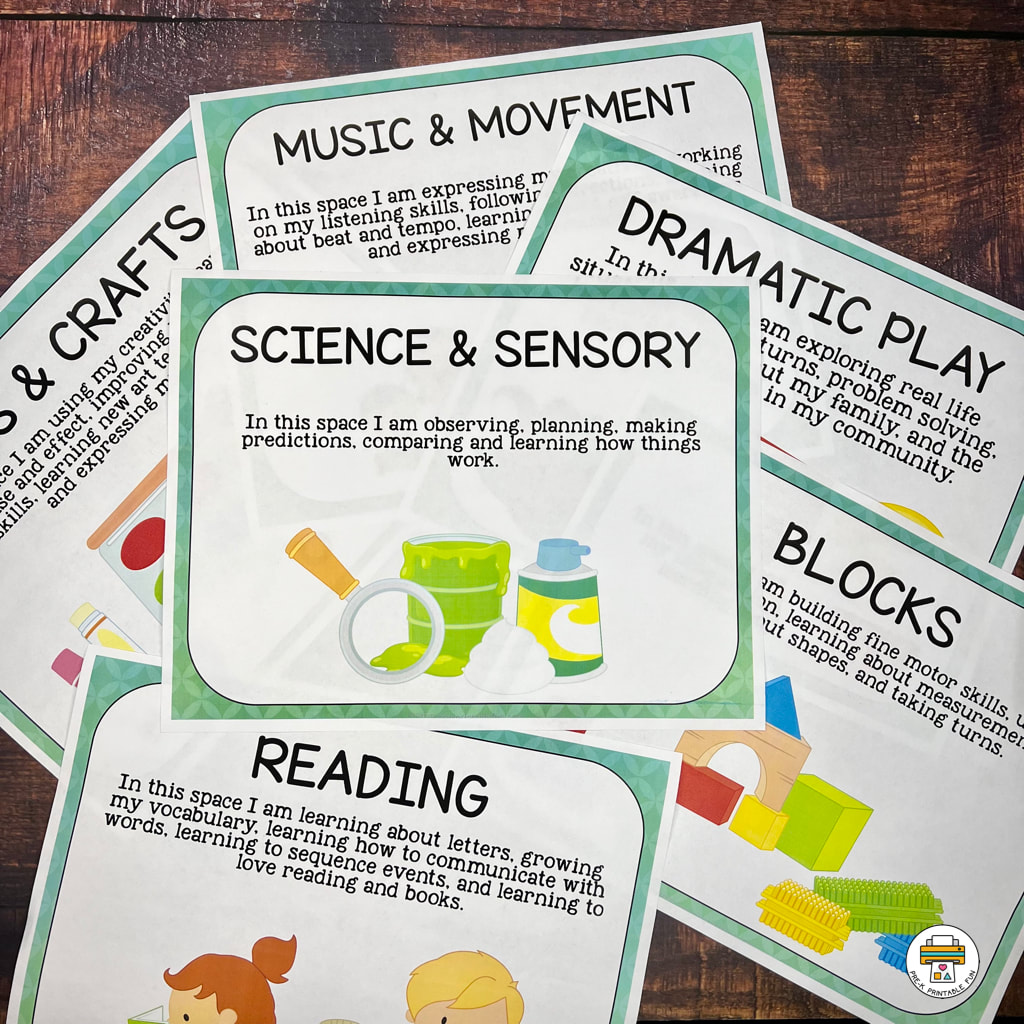Topics and Vocabulary to Teach Preschoolers About SpidersIntroduce preschoolers to the captivating world of spiders by exploring topics like spider anatomy, their unique webs, where they live, different spider species, their life cycle, the wonder of spider silk, and their role as both predators and prey. With age-appropriate vocabulary and engaging activities, you can foster curiosity and understanding, helping young minds appreciate the incredible creatures that spiders are and the important part they play in our natural world. Teaching Preschoolers About SpidersDiscovering the benefits of learning about spiders at a young age extends beyond mere fascination. Engaging with spider-related topics during the preschool years spark an early interest in science that can lead to a lifetime of exploration and discovery. Through spider education, young minds not only uncover the wonders of nature, it also build a strong foundation for intellectual growth and a positive attitude towards science and nature. On our website, you can find a ton of great spider related activities on our free theme planning page as well as printable resources to use with your preschoolers during centers or throughout your day! We love extending learning by using books about spiders and videos to help your preschoolers apply this learned knowledge to real-life. If your school allows it Engaging Spider Topics for PreschoolersFrom spider webs to their fascinating life cycles, our spider-themed activities are designed to captivate young minds and spark their curiosity about these incredible creatures. Dive into the world of spiders with age-appropriate vocabulary and hands-on exploration, creating a fun and educational experience that's sure to ease fears and leave your preschoolers intrigued about spiders. Spider Anatomy
Different Types of Spiders
Spider Webs and Silk
Spider Life Cycle
Essential Spider Vocabulary for PreschoolersLearning about spiders is not only fascinating but gives your preschoolers the chance to learn new words they've never heard before! Spinnerets
Predator
Arachnid
Habitat
Fun and Interactive Spider Activities One of the best ways to extend learning is through hands-on activities like crafts, printables, and games. Spider Craft Time
Spider Web Hunt
Spider Web Songs and Rhymes
Tips for Teaching Preschoolers About Spiders Teaching preschoolers about spiders can be both fun and educational. Here are some tips to make the experience engaging and effective:
By using these tips, you can make the learning experience enjoyable and informative for preschoolers while nurturing their curiosity and understanding of spiders. What have been some of your most exciting aspects of teaching preschoolers about spiders? You May Also Like: |
What can I help you find?
Become a MemberGet Free
|
Learning Centers
Preschool Learning Centers are commonly referred to as Preschool Centers, or Learning Spaces. These are activity areas dedicated to a specific type of of play and exploring a variety of topics and activities. Download our Free set of Center Signs!
|
Site
|
|






 RSS Feed
RSS Feed
